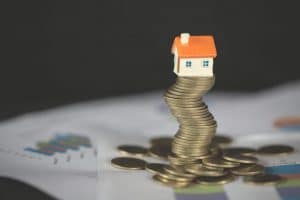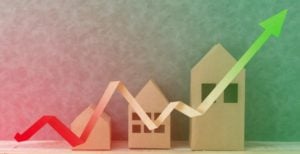[ad_1]
Please use the menu below to navigate to any article section:
I’ve met so many investors who are fixated on rental yields – but for me, capital growth is always the number one thing to look out for when buying an investment property.
Building wealth through real estate is best achieved by buying quality investment-grade properties and holding them for the long term, allowing the market to do most of the hard work for you.

Sure after all expenses, your net yield may be less than 3%.
But when you consider the capital growth you’ll achieve from a well-located property, the overall returns are very good, especially in today’s low-interest-rate environment.
And as this capital growth is not taxed unless you sell your property – and why would you do that? – this enables you to reinvest your capital to generate higher compounding returns.
On the other hand, rental income is taxed, leaving less to be reinvested.
This means for investors in the asset accumulation stage of their journey, the more capital growth you achieve (even at the cost of lower rental income) the more wealth you will accumulate in the long term.
But not all properties are created equal in terms of their capital growth potential…
So how do you separate the wheat from the chaff?
1. A good location

You can renovate a kitchen, landscape a garden, even knock down a horror dwelling and put two sparkling-new homes in its place, but you’re powerless to change the location.
With a good location comes added amenity, low crime rates, nice neighbours, and a comfortable commute – and that means capital growth.
There’s a reason they say you should “buy the worst house on the best street”.
2. Scarcity factor
When something is rare or difficult to obtain, it automatically commands a higher value, and usually greater competition too.
It’s classic supply and demand, and that’s good news for investors seeking high capital growth.
Examples of the scarcity factor in real estate include standalone properties within a 10km radius of the CBD, where land is worth more per square metre and apartment oversupply abounds.
Homes within catchment zones for high-performing schools are another prime example – there will always be more hopeful parents house hunting in these suburbs than there are homes available to purchase.
3. Strategic renovation potential
Plenty of investors have been caught out throwing good money after bad when it comes to improving their rental properties.
However, one way of “manufacturing” capital growth is to strategically renovate a property to maximise its rentability and resale value.
Top of this list is bathrooms and kitchens, which can add instant value to even the shabbiest property.
Stick with classic, versatile looks rather than hot-right-now trends, and don’t blow the budget by decking the whole room out in luxurious fixtures and fittings – instead, focus on one feature element, such as Caesarstone benchtops, and find more affordable options for the rest of the reno.
Other clever improvements that should add value include anything that creates space, such as an extension or loft conversion and installing energy-efficient technologies.
4. High land to asset ratio
The Land to Asset Ratio is the proportion of the overall property value made up of the land component.
For example, if a property is worth $1 million, and the land value alone is $600,000, then the Land to Asset Ratio is 60%.

Now I’m not talking about the size of the land.
I’d rather own a semi-detached home on a small block of land in one of the inner suburbs of Sydney, Melbourne, or Brisbane than a 10-acre farm in regional Australia.
You see…it’s not the size of the land that matters, it’s the location of the land, and it’s scarcity that drives capital growth.
Of course, it’s the other way around for developers who try and squeeze as many apartments as they can on the block of land lowering the land-to-asset ratio.
That’s why I steer clear of investing in high-rise apartment towers and like to own properties with a high land-to-asset ratio.
5. Development potential

Whether you plan to actually develop the property or not, this criteria means the property will appeal to a wide range of buyers in the future – owner-occupiers will appreciate the potential to create a spacious family home, while investors will be drawn in by a generously sized block with room to develop a trio of townhouses.
Check council zoning, density regulations, and any heritage overlay before you buy, so you know that future purchasers (or yourself, if you decide to foray into developing) can put these plans into action.
These are just some of the key criteria of a quality property with strong capital growth potential.
Learn more about capital growth properties, including myths that can stop you from profiting from property, here.
ALSO READ: The 17 steps to financial freedom through property investment
[ad_2]
Source link
